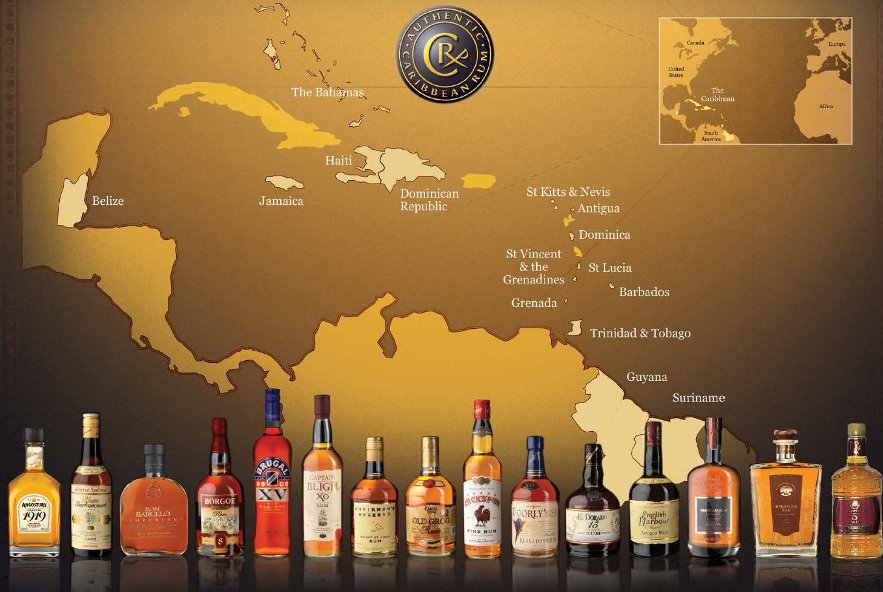The changing face of Caribbean rum

David Jessop, Dominican Today senior Op-Ed contributor
In a few weeks’ time, the European Union’s (EU) long running programme to support the development of the Caribbean rum industry will come to an end.
It has been one of the most successful private sector related undertakings ever to be supported by the EU in the Caribbean. It leaves much of the industry in the region, leaner, fitter and with an international outreach that should enable it to survive well into the future; albeit in a much-changed form.
In almost every respect, the programme has been unique by both European and regional standards. Not only did it support the industry’s modernisation and adaptation following the unexpected early removal of US and EU tariffs on white spirits in 1996, but it also provided the industry with the space to adapt successfully to a world dominated by competition from vastly larger global players.
The rum programme created many precedents. Not only did it support the private sector, but it accepted, with CARICOM’s support, that delivery should be though an industry association, the West Indies Rum and Spirits Producers Association (WIRSPA), which established a delivery mechanism that throughout, received positive assessment and audits.
Among its many unusual features as a development programme, was the use of matching funds. This involved the industry deploying around €60m (US$65m) from its own resources and borrowings, and the European Development Fund (EDF) providing some €58m (US$63m) over 14 years through two successive programmes that saw factory upgrades, environmental protection schemes, training programmes, some marketing support, and brand development.
The programme was also unique because it provided support on a genuinely pan-Caribbean basis for all eligible rum producers, whether they were in the Dominican Republic, Haiti, Suriname or in the Anglophone Caribbean.
Unusually too, until recently, WIRSPA ran at the same time, at its member’s own expense, a quite separate international operation that enabled the association to look over the horizon in North America and Europe. This undertook research, analysis and lobbying, helping it to respond successfully with Caribbean governments on almost every trade policy challenge that arose. The industry also forged relationships with other competitor associations, for example with the industries in the French département d’outre-mer and the US, acting together when common threats arose.
Speaking about the value of the programme, WIRSPA’s present Chairman, Dr Frank Ward, says that it opened up and catalysed new opportunities for all Caribbean distillers and brands. Apart from enhancing competitiveness and improved production methods, he credits it with having changed business practices and deepened cooperation between distillers through region-wide exchanges on industry issues.
Now as the programme ends, the outlook for the industry’s is once again in transition. Although more competitive, rum faces challenges very different to those it previously had to address.
Today the industry in the region is having to adjust to an environment in which many subsidised players in the Americas are selling rum into the Caribbean’s traditional markets, new uncertainties have arisen in the trade environment, and there is pressure to embrace the new thinking of foreign investors
What is not widely recognised is that the structure and ownership of the Caribbean rum industry has changed substantially. Although distilleries and brands still have the image of being family run, this is now much less the case.
Consolidation, integration and rationalisation have taken place across the sector, regional rum producers are cross invested, and major external players like Campari, Remy Cointreau, Edrington, Diageo, Pernod Ricard, and most recently Maison Ferrand, now own almost every major Caribbean distillery and brand. While this provides benefits of scale, international distribution and marketing, it is raising new issues about the ethos of Caribbean rum, and some say, the production techniques it uses.
Secondly, the industry is concerned about the cost of inputs, particularly molasses, which makes up around 40 per cent of its cost of production.
While many distillers continue to source their molasses in the region, and so depend on the continuation of the sugar industry, they are not willing to do so at any cost. The industry has always argued that it needs, when necessary, to source its raw materials on the international market, so is opposed to any development that might see regional tariffs raised to protect the sugar industry against imports from non-regional sources.
Thirdly, the industry continues to face what it regards as unfair competition. In 2014 CARICOM governments declined to support it wish for action to address the cover-over programmes introduced by the USVI and Puerto Rico that effectively subsidised multinationals producing rum in both territories for the US market.
However, while it might not have been the outcome anyone in the industry would have wished for, there is evidence that these programmes have been the drivers of change. They have caused most of the remaining Caribbean producers of bulk rum to either find external investors, or reduce or cease to produce low value bulk products; focussing instead on premium brands.
Fourthly, Brexit and the new US administration’s approach to trade and its ‘America First’ policy have raised uncertainties about future access and competition. In both cases, the industry recognises that it may face new challenges in ensuring its market share is not eroded.
The industry association itself is also having to undergo fundamental institutional change.
Frank Ward says that a slimmed down WIRSPA is likely to have focus on different issues.
While this is to some extent a reflection of the industry facing fewer battles, as it is now able to operate successfully in a liberal trade environment, it also reflects new industry attitudes, generational change and a likely reorganisation of the organisation’s leadership structure.
While it will continue to defend its members’ interests, he says that he hopes that in future it will be able to work with other ACP partners, possibly with external support, sharing for example the industry’s experiences and technical training.
Dr Ward is optimistic that if current trends continue, and WIRPA’s members target market sectors where there is room for growth through high value branded products, the rum industry in the region will continue to do well. He observes, however, that smaller Caribbean brands may struggle. “They have market access, but for them distribution and presence in international markets will remain expensive”, he says.
Unlike some other industries in the region, Caribbean rum never opposed tariff liberalisation, wanting only time and support to adapt. That phase is over. Once dominated by small local distillers, it is now having to adapt to the requirements of those who are investing in its future, while having to address a variety of quite new challenges.
David Jessop is a consultant to the Caribbean Council and can be contacted at
david.jessop@caribbean-council.org
Previous columns can be found at www.caribbean-council.org
March 24th, 2017















